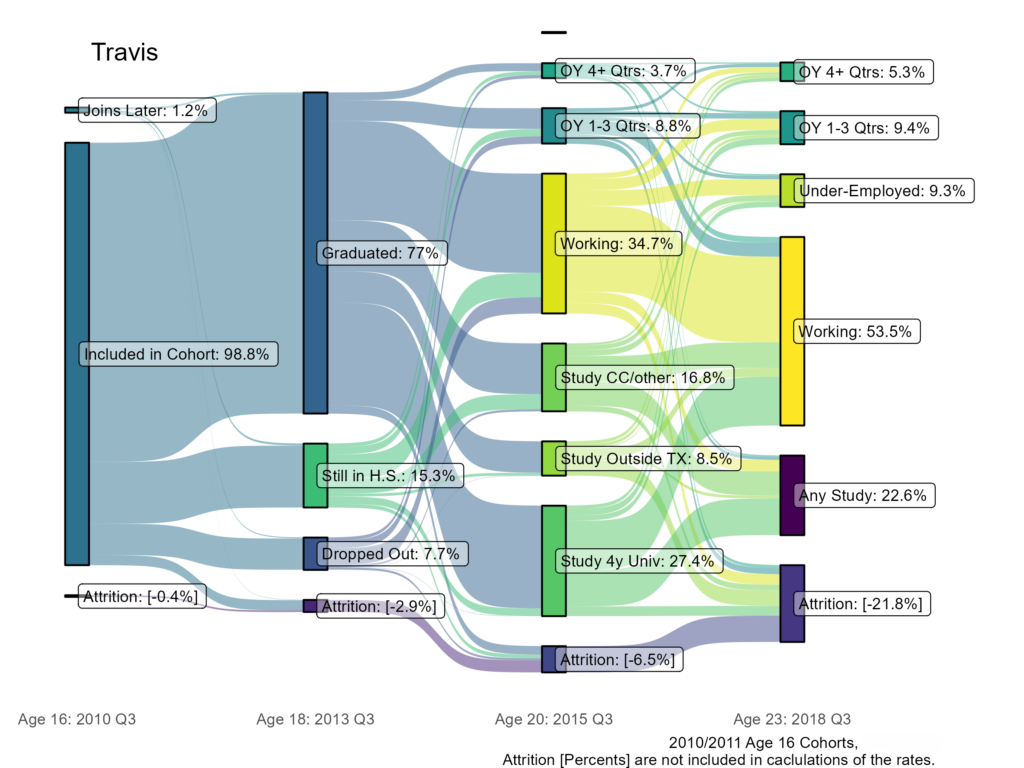Highlighting trends that challenge assumptions about when and why youth disconnect
The following analysis looks at quarterly rates of disconnection over time (as opposed to the other retrospective analyses of other sections). We aggregated groups of individuals who were flagged with the following outcomes (dropout, TEA at-risk of failing to meet standards, TEA free/reduced lunch, and graduates). Similar patterns are observed here for both academic status and race/ethnicity in the retrospective analyses.
Some additional insights are made possible through using panel data. First, for youth with a record of dropping out, there is the expected spike of disconnection at the start of the panel, as youth exit school; however, this substantially higher rate of disconnection until the end of the panel at age 24. This provides evidence that dropping out has long-lasting consequences that are only marginally recovered as youth enter adulthood.
Quarterly Rates of Opportunity Youth Status by Academic Record
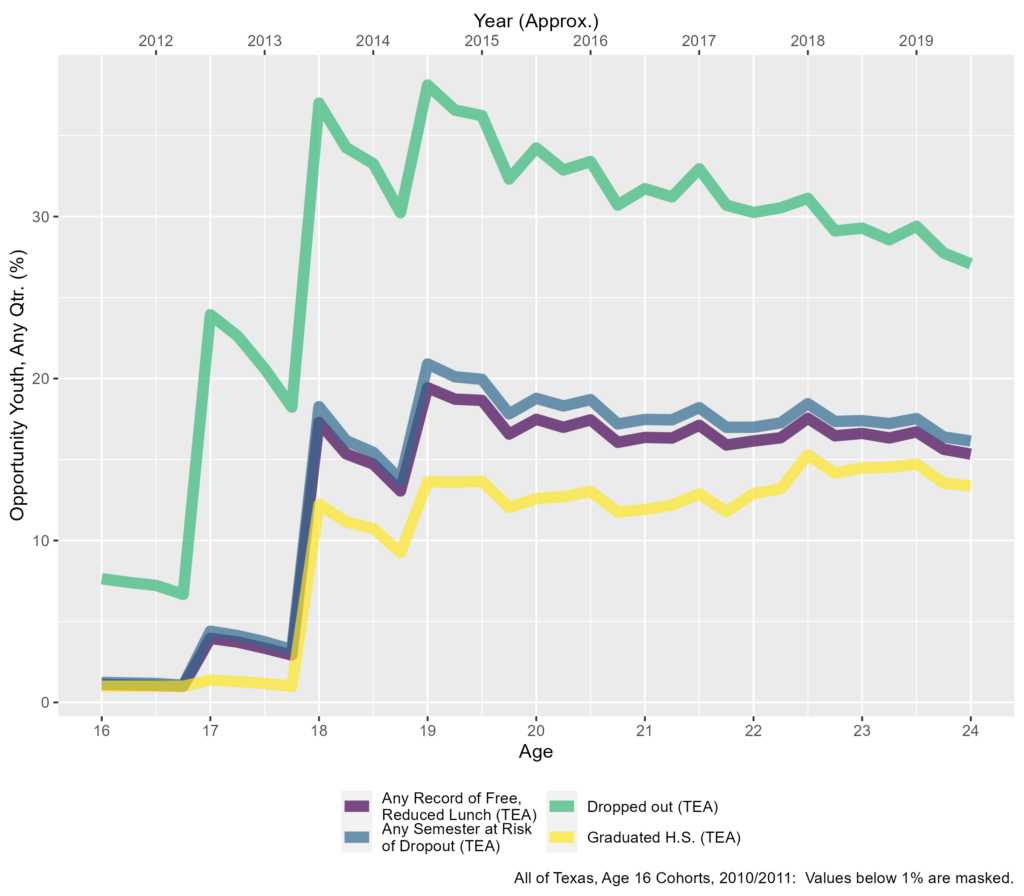
In the retrospective analysis, we found only moderate differences in disconnection among racial/ethnic groups, aside from Asian-American youth, who exhibited far lower rates of disconnection than other youth. In the panel analysis, it is clear that this difference occurs during the years when youth typically matriculate for post-secondary education. While Asian-American youth remain in the lowest position as they exit the panel into mature adulthood, it is the low exposure during college years that likely makes this difference.
Quarterly Rates of Opportunity Youth Status by Race/Ethnicity
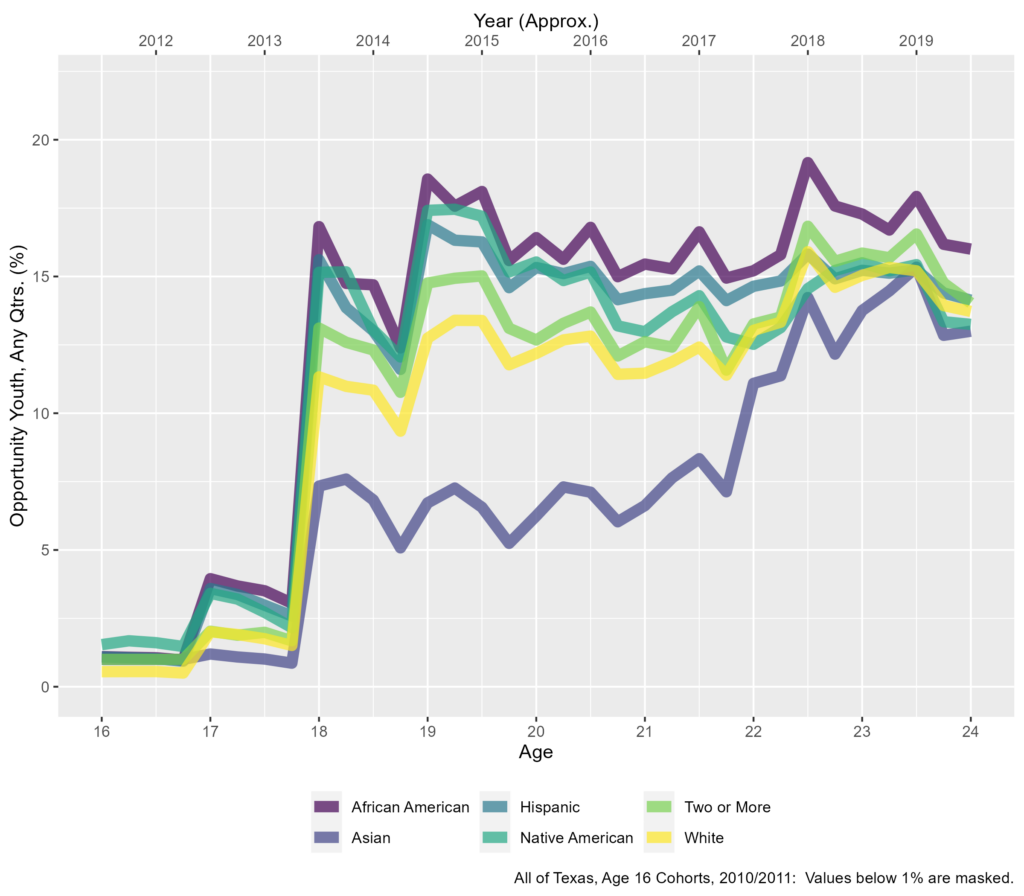
The following panel analysis examines youth who finished secondary education in urban (large central metro), suburban (large fringe), smaller towns, and rural (non-core) settings. While there are distinctly lower rates of disconnection during post-secondary-age portions of the panel, these differences are not as important as academic (or even some demographic) factors.
Quarterly Rates of Opportunity Youth Status by Urban-Rural Designation
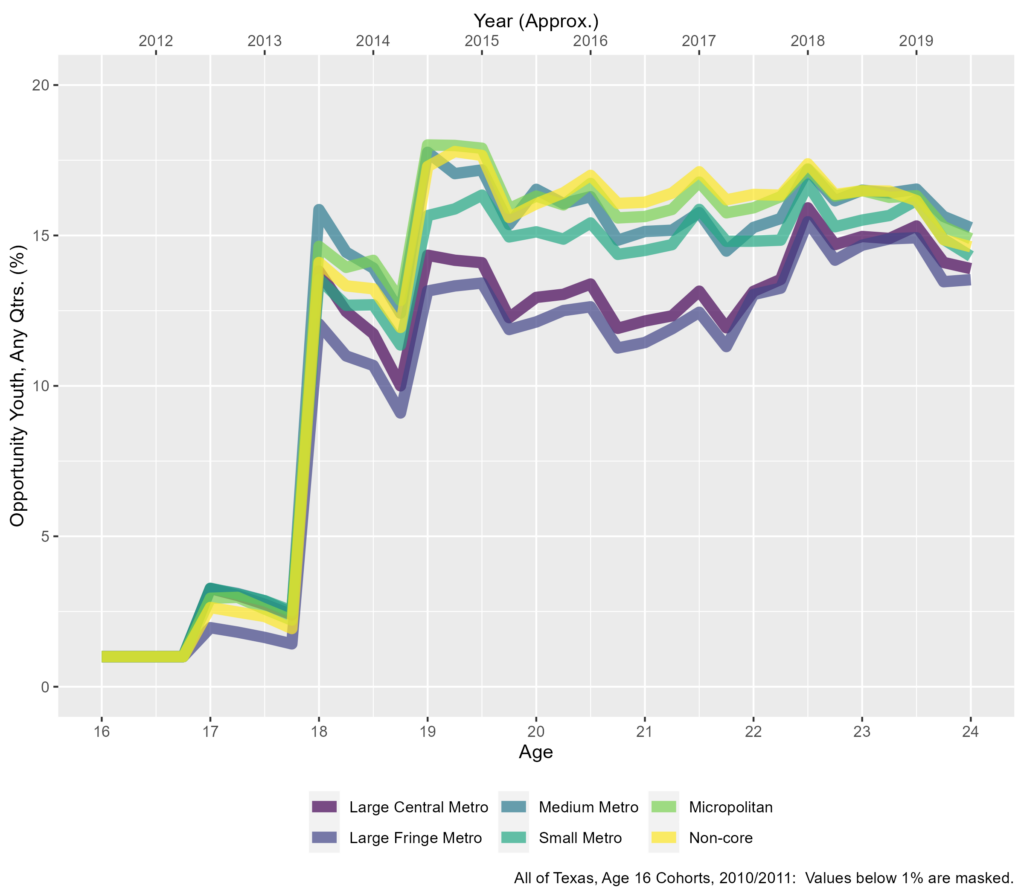
The remaining elements take more detailed slices of the data at four time points: At the start of measurement, nearly all youth are in school (not articulated in the plot), because this is one year after we start tracking. Then, we see secondary status at 18, followed by two slices that distribute individuals into mutually exclusive statuses at approximate ages 20 and 23. If they are both working and studying, they are listed as working here. We add the “underemployed” status for the final slice of the panel to see how many youth are earning less than 40 hours of minimum wage earnings per week over that quarter.
The first two diagrams compare rural youth to suburban youth, as they appear the most distinct in the previous panel plots. At approximate age 18, in the third quarter of 2013, we see that most have graduated, some have dropped out, and a substantial number are still studying. At this age it is already apparent that the suburban youth are graduating more quickly and dropping out less frequently. At age 20, 15.8% of youth in the cohort are categorized as short-term OY (1-3 quarters) or persistent OY (4+ quarters), while only 12.2% of suburban youth are. Interestingly, suburban youth are nearly twice as likely to study outside of Texas for post-secondary education. By age 23, after many of those who went to college have finished, the OY rates are more similar. The slight outperformance by suburban youth comes from higher rates of studying rather than working, and the rural youth are also more likely to earn low wages at that age.
Opportunity Youth Status at Four Key Moments: Youth in Rural Counties
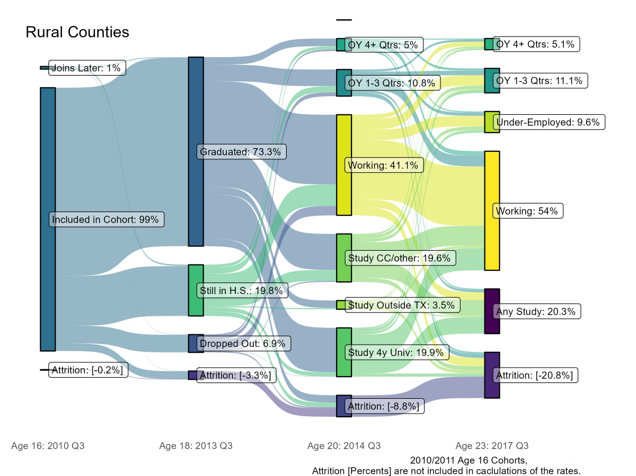
Opportunity Youth Status at Four Key Moments: Youth from Suburban Counties
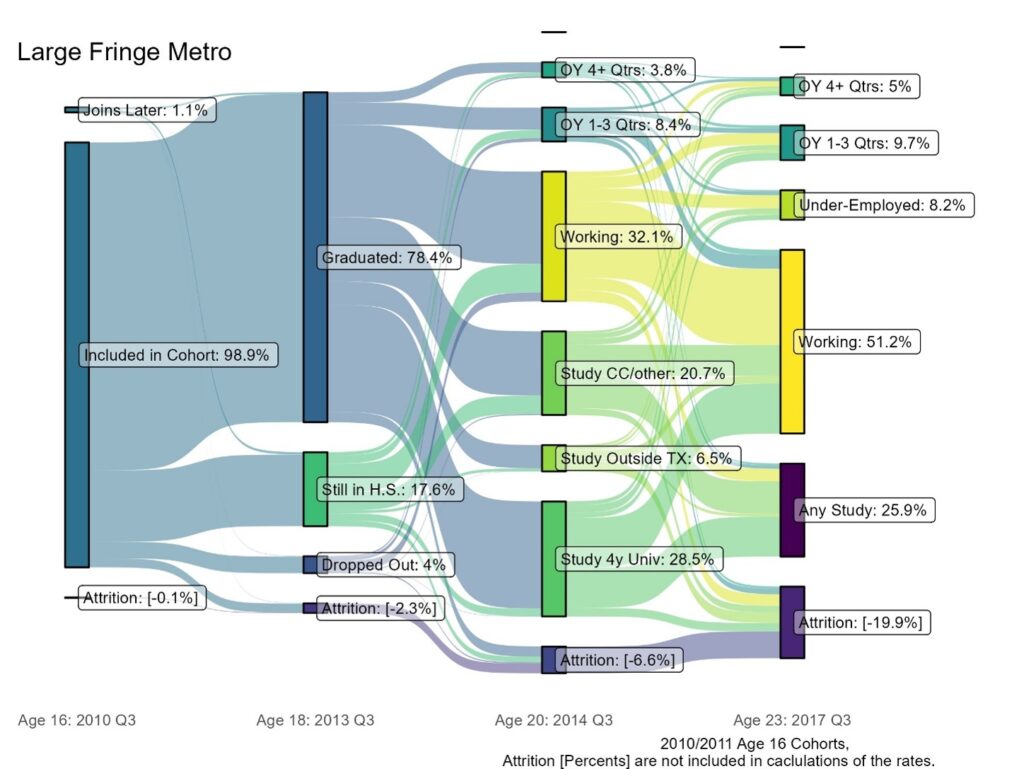
The remaining four diagrams look at the same slices of data for the four key cases in the ESTOY project. Nuanced differences in these groups exist, but none is as distinct as the rural group, given that all four are major metro areas.
Opportunity Youth Status at Four Key Moments: Bexar County Youth
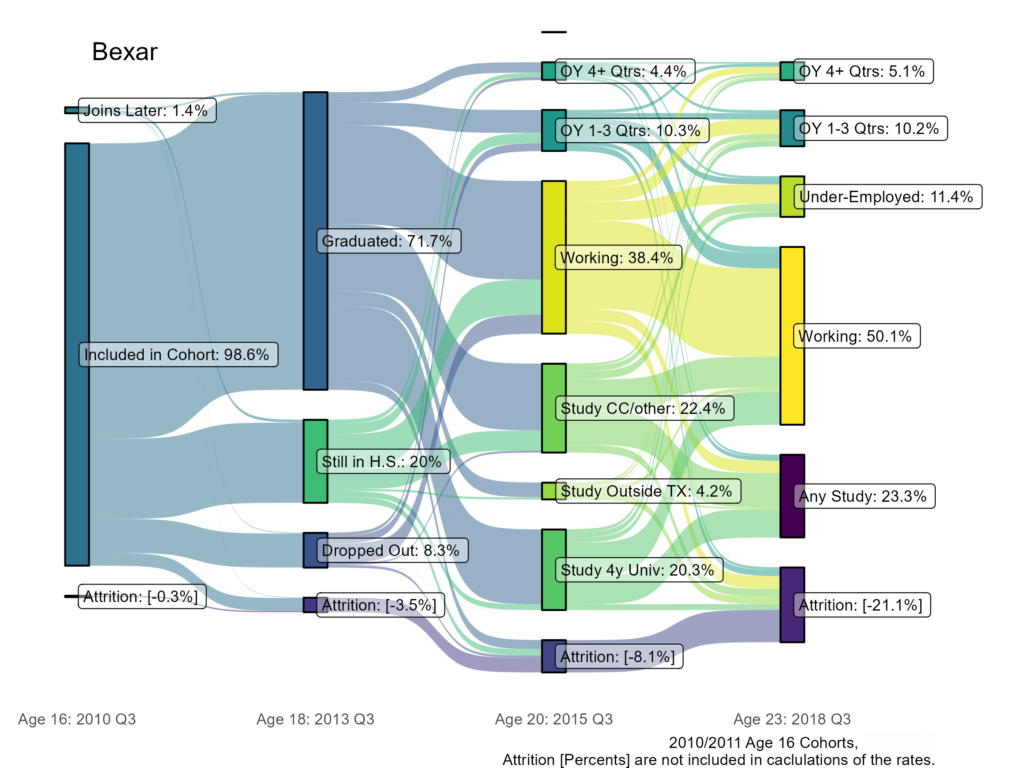
Opportunity Youth Status at Four Key Moments: Dallas County Youth
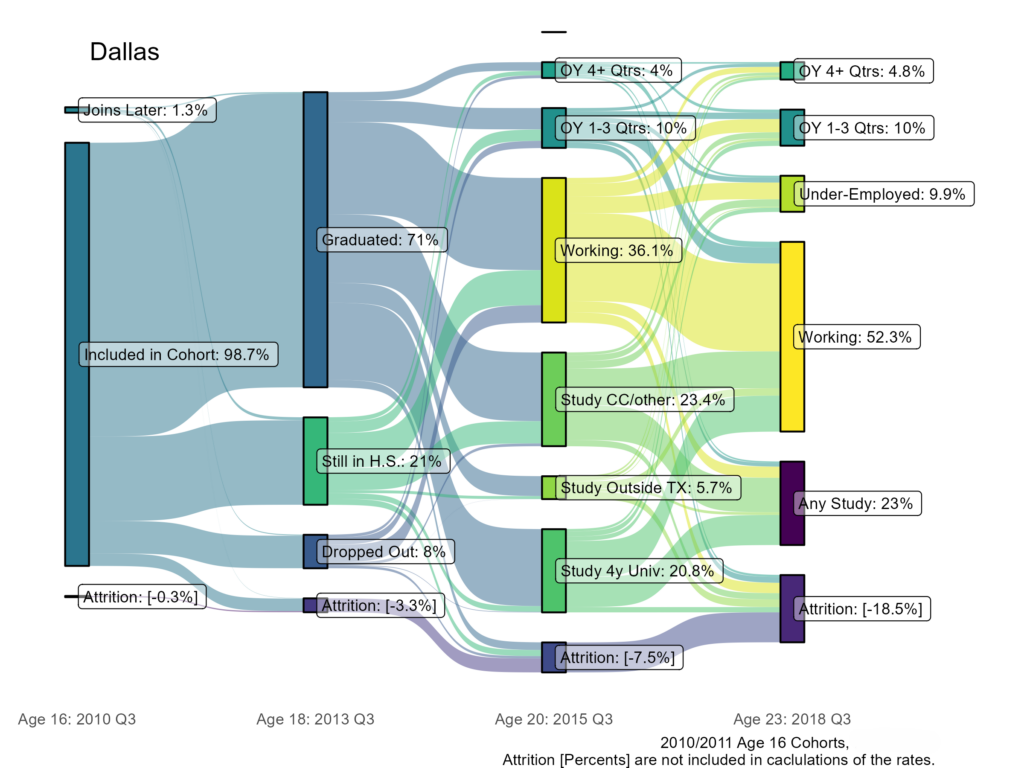
Opportunity Youth Status at Four Key Moments: Harris County Youth
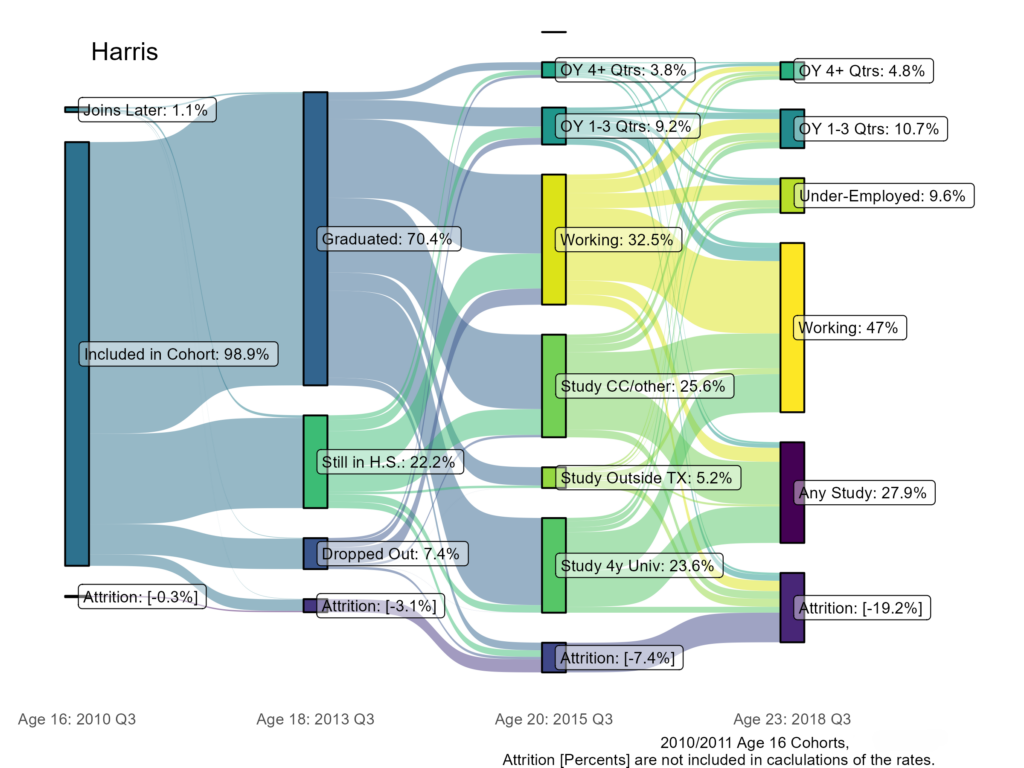
Opportunity Youth Status at Four Key Moments: Travis County Youth
